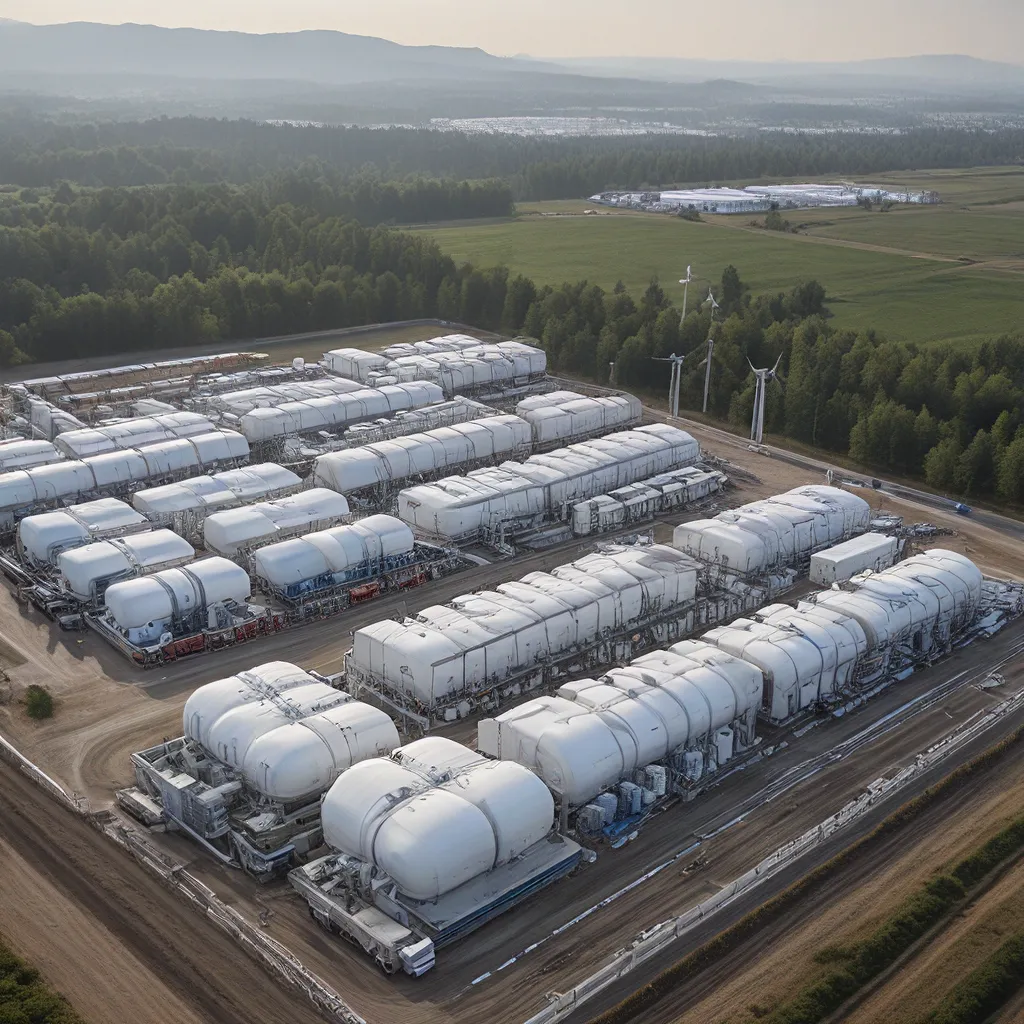
Buckle up, my friends, because we’re about to embark on a journey into the heart of the energy revolution – the captivating world of hydrogen! As an energy-saving enthusiast, I can’t help but get giddy about the transformative potential of this versatile element. It’s like discovering a secret superpower that’s been hiding in plain sight all along.
The Hydrogen Hype: Separating Fact from Fiction
I’ll admit, the buzz around hydrogen has been building for years, but now it’s reached a fever pitch. Everywhere I turn, I see headlines touting hydrogen as the golden ticket to a clean, sustainable future. But let’s be real – not all of this hype is backed by solid facts. So, let’s dive in and separate the hydrogen hype from the hydrogen reality.
First off, let’s address the elephant in the room: the environmental impact of hydrogen production. You see, while hydrogen itself is a clean-burning fuel, the way it’s currently produced can be a real dirty business. Much of the world’s hydrogen is made through a process called steam methane reforming, which relies on natural gas – a fossil fuel. This means that the production of hydrogen can actually contribute to greenhouse gas emissions. However, SoCalGas is highlighting the potential for clean hydrogen production using renewable energy sources, which could be a game-changer.
But the good news is that the tides are turning. As the World Economic Forum points out, there’s been a surge of investment and policy support for clean hydrogen production, from the U.S. Department of Energy’s $7 billion commitment to the creation of regional hydrogen hubs, to the European Union’s plans to ramp up its hydrogen production capacity. This means we’re on the cusp of a hydrogen revolution that could truly transform the energy landscape.
Hydrogen’s Versatile Applications: Fueling a Decarbonized Future
So, what exactly can hydrogen do for us? Well, my friends, the potential applications are as diverse as the element itself. Hydrogen can be used to power everything from heavy-duty vehicles to industrial processes, and it’s even making waves in the aviation industry.
The University of Michigan’s MI Hydrogen initiative is at the forefront of exploring hydrogen’s role in sustainable transportation. Their researchers are working on redesigning engines to use hydrogen instead of conventional fuels, as well as exploring the potential of hydrogen fuel cells for electrification. And it’s not just about cars – they’re looking at hydrogen’s potential to decarbonize maritime and aviation industries too.
But hydrogen’s applications extend far beyond transportation. It can also play a crucial role in decarbonizing energy-intensive industries like steel, cement, and chemical manufacturing. These so-called “hard-to-abate” sectors have traditionally relied on fossil fuels, but hydrogen could provide a clean alternative. Imagine a future where the steel we use in our homes and the glass in our windows are produced with zero emissions – that’s the kind of future hydrogen could help us create.
The Road to a Hydrogen-Powered Economy: Challenges and Opportunities
Now, I know what you’re thinking – if hydrogen is so great, why aren’t we all driving hydrogen-powered cars and living in hydrogen-heated homes already? Well, the truth is, the transition to a hydrogen-powered economy is not without its challenges.
One of the biggest hurdles is the infrastructure required to produce, store, and distribute hydrogen at scale. The University of Michigan’s MI Hydrogen initiative is tackling this head-on, working to develop strategies for building a comprehensive hydrogen ecosystem that links production, delivery, and end-use applications. It’s a complex puzzle, but one that’s critical to solving if we want to see hydrogen reach its full potential.
Another challenge is the cost. While the price of hydrogen is coming down, it’s still more expensive than traditional fossil fuels in many applications. But as the World Economic Forum points out, the tide is turning, with new policies and investments helping to drive down the cost of clean hydrogen production.
But you know what they say – where there’s a challenge, there’s also an opportunity. And boy, are there opportunities galore when it comes to hydrogen. Just imagine the jobs that could be created in the hydrogen supply chain, from manufacturing to installation and maintenance. And the environmental benefits are truly staggering – a world powered by clean hydrogen could mean a dramatic reduction in greenhouse gas emissions, cleaner air, and a healthier planet for us all.
Embracing the Hydrogen Horizon: The Future is Bright
So, as we look to the horizon, the future of hydrogen is nothing short of dazzling. From powering our cars and planes to heating our homes and fueling our industries, this versatile element has the potential to transform the way we live, work, and move.
Sure, there are still challenges to overcome, but with the kind of momentum and investment we’re seeing, I can’t help but feel optimistic. And you know what they say – the future belongs to the bold. So, let’s embrace the hydrogen horizon and work together to create a cleaner, more sustainable world for generations to come.
After all, as the folks at Plug N’ Save Energy Products would say, when it comes to energy-saving solutions, the sky’s the limit. And with hydrogen, the possibilities are truly out of this world.
So, strap in, my friends, because the hydrogen revolution is just getting started. The road ahead may have a few bumps, but I have a feeling it’s going to be one heck of a ride.